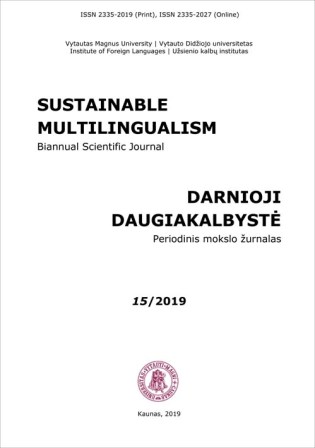Translation as a barrier between the original narrative and the reader: a case study of power relations and address forms in two crime fiction novels
Translation as a barrier between the original narrative and the reader: a case study of power relations and address forms in two crime fiction novels
Author(s): Gintarė PavilavičiūtėSubject(s): Translation Studies, British Literature, American Literature
Published by: Vytauto Didžiojo Universitetas
Keywords: power relations; address forms; literary translation; translation effects; barrier;
Summary/Abstract: The role of the translator as a mediator in literary translation has been a salient topic since the late twentieth century; however, more recent research signifies that instead of mediating, the translator sometimes affects the literary work translated, shifting the focus of such studies onto the reader. This article aims at investigating the possible effects the literary translator has on readers by examining the translation of address forms, the linguistic markers of social status into Lithuanian and the use of polite or familiar second-person pronouns in two crime fiction novels, Agatha Christie’s (1962) The Mirror Crack’d from Side to Side and John Grisham’s (1992) The Pelican Brief. The literary translator may grapple with the issue of translating social interactions which derives from cultural differences present in the source and target societies. Subsequently, containing a plethora of realistically depicted social interactions adherent to the societies represented, crime fiction provides Lithuanian literary translators with the issue of deciphering power relations based on the contexts they occur in and choosing accordant polite or familiar second-person pronouns, a distinction not present in English. As this study has shown, the translator sometimes misinterprets power relations or favours the social norms of the target culture, affecting the narrative, creating effects discordant with the writer’s intentions, and in some cases, entailing a contingent barrier between the reader and the original literary work.
Journal: Darnioji daugiakalbystė
- Issue Year: 2019
- Issue No: 15
- Page Range: 147-169
- Page Count: 23
- Language: English

